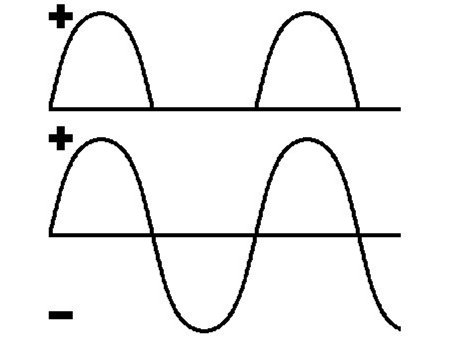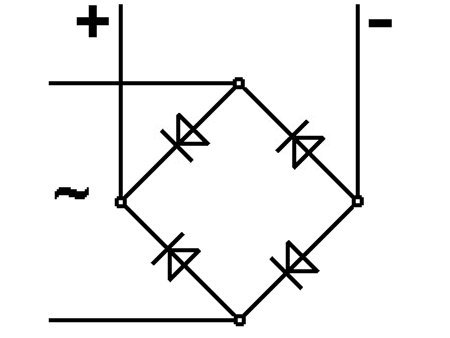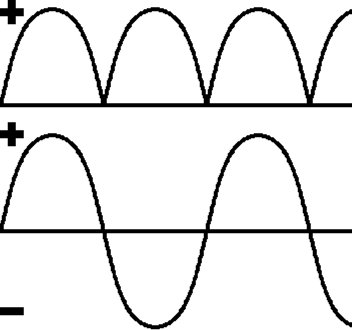
|
Diode
In the above picture you can observe: The correct laying on of the current (plus to plus, minus to minus), leads to a smaller barrier-layer. The reverse polarity (plus to minus, minus to plus) would increase the size of the
barrier. One could compare it with a spring-loaded check valve from the hydraulics, this also only opens in one direction.
Please enlarge the above diagram. It should actually, be much wider, because on the right, the tension is slowly increased to 0,7 V. Only after this value, does a current-flow occur with silicon diodes. In the case of
reverse polarity, the tension must amount to -100 V (on the left of the picture), to destroy the diode and to override its barrier effect. The relationship of 0,7 V to -100 V can only be depicted by using the interrupting lines.
Added to this, is that the curve on the left is dependent on the temperature, this means, that at 0°C and at 0,6 V, the climb begins and has a temperature of 100°C at 0,7 V. Then it's almost vertical. At a normal
temperature the voltage drop in a silicon diode is taken on with 0,7 V, which is valid for a large range of tension and current strengths.
Now, what can one do with a diode? Because up to its disruptive voltage, it does not allow any reverse polarity, it can be used to convert an AC- into a DC current.

Unfortunately, using only one diode has the disadvantage, that the negative portion disappears completely. In the next picture you can see how it can be done better.

In this case, the negative part of the AC current is, so to speak, folded upwards. Of course, a large amount of pulsation remains, indeed, the effective current is actually, twice as high. One can further smoothen it out by
using a condenser, which takes in the current when it is at its highest and then delivers it to the weaker areas.

|
|